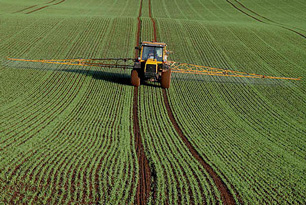Methoxychlor
| EPA Maximum Contaminant Level (MCL) |
0.04 mg/L |

Methoxychlor is a pesticide used to control a wide range of pests affecting vegetable, fruit, tree and cereal crops, and on farm animals and pets. According to the EPA, it is “preferred to DDT for use on animals, in animal feed, and on DDT-sensitive crops such as squash, melons, etc.”
Methoxychlor arrives in drinking water primarily through runoff from its insecticidal use.
Health Effects of Methoxychlor
Acute exposure to high levels of methoxychlor can, according to the EPA, potentially cause “central nervous system depression, diarrhea, and damage to liver, kidney and heart tissue.” The agency also warns of health problems associated with long-term exposure:
Methoxychlor has the potential to damage liver, kidney and heart tissue and to retard growth from long-term exposure at levels above the MCL [0.04 mg/L].
According to the World Health Organization, data is inadequate to determine the carcinogenicity of methoxychlor, although “it may be a tumor promoter.”
Water Treatment for Methoxychlor
The EPA recommends granular activated carbon (GAC) for the treatment of methoxychlor.
Sources: EPA (1), EPA (2), WHO, Photo: geograph.org.uk, author: Walter Baxter
Site Index
Filtration Systems
- Aeration for Iron & Sulfide
- Backwashing Filters
(whole house & well units)
- Chlorine & Chemical Injectors
- Countertop Water Filters
- Emergency Filters
- Garden Hose Filters
- Reverse Osmosis, Residential
- Reverse Osmosis, Commercial
- Shower Filters
- Specialty Filters
- Ultraviolet Systems
- Undersink Filters
- Water Softeners
- Whole House Filters
Cartridges
Parts
- Replacement Parts
- Faucets
- Filter Media
- Fittings
- Housings
- O-rings
- Pumps
- Pura UV
- R.O. Parts
- R.O. Tanks
- R.O. Booster Pump
- VIQUA UV